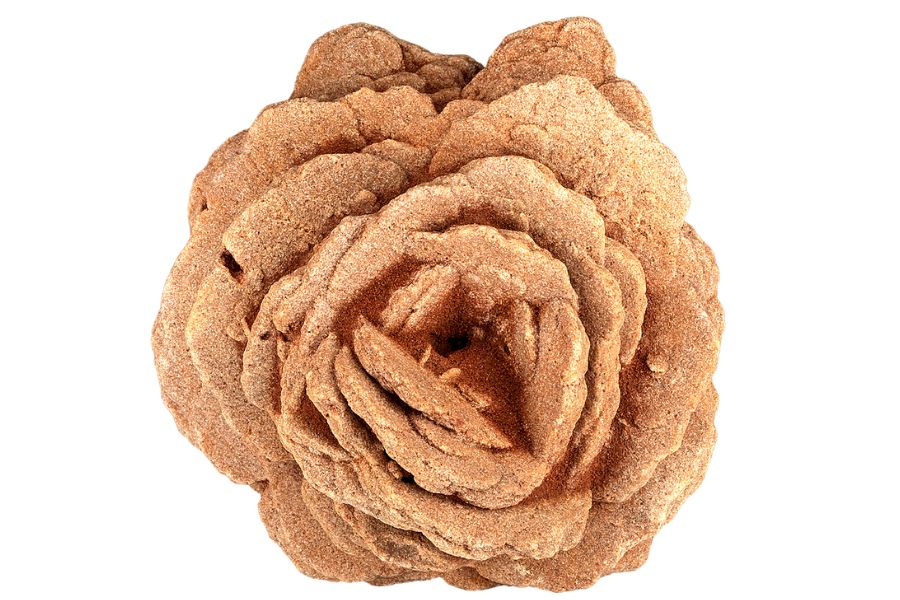Oklahoma’s landscape is a vast canvas showcasing a rich variety of rocks, minerals, and gems. This state, known for its diverse geology, offers a fascinating journey for anyone interested in the natural world beneath our feet.
Among the types of rocks found in Oklahoma, there are several noteworthy finds that draw enthusiasts from all over. Quartz, galena, silver, and the famous rose rock are just some of the state’s fascinating finds.
Whether you’re a serious collector or simply someone who loves to be outdoors, we can help you learn about the rocks, gems, and minerals that you can find in Oklahoma.
A List of The Common Rocks, Stones, and Minerals Found in Oklahoma
Check out more information about the rocks, gems, and minerals you can find in the state and where you can find them:
The State Rock, Mineral, and Gem
These are the state rock and mineral that have been chosen to officially represent Oklahoma:
| Oklahoma State Rock | Rose Rock |
| Oklahoma State Mineral | Hourglass Selenite Crystal |
Before we start your adventure, it’s important to understand the rules and guidelines to ensure we’re collecting responsibly. Consulting the Bureau of Land Management (BLM) first is a crucial step for rock collectors and enthusiasts.
This ensures we’re respecting the land and its resources, making our rockhounding adventures both enjoyable and sustainable.
Calcite
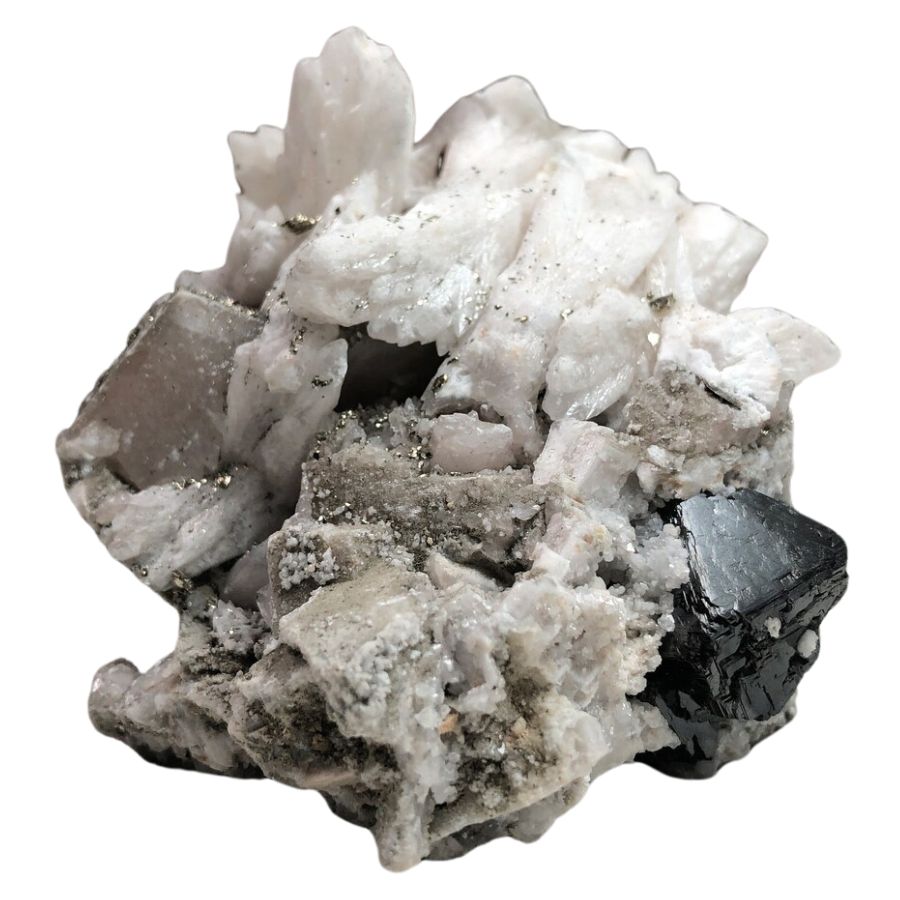
Calcite is a common yet fascinating mineral. It’s made up of calcium carbonate, the same material that’s in chalk and limestone.
It forms in many different geological environments; it can grow in sedimentary rocks like limestone, form from hot water in underground spaces, or even in the shells of sea creatures.
What’s remarkable about calcite is its wide range of colors and forms. It can be clear, white, or colorful, and it can grow into crystals of various shapes and sizes.
Another cool thing about calcite is how it reacts to acid. If you put a drop of vinegar on calcite, it will fizz and bubble.
The variety of colors and crystal forms of calcite make it attractive for collectors. Also, its unique properties, like its reaction to acid, make it an interesting mineral to study and learn about.
It’s also important in many industries. It’s used in making cement and lime for construction, and it’s ground up into a white powder for use in products like toothpaste and paint.
Where you can find calcite in Oklahoma
- Picher Field, Ottawa County
- Cherry Canyon, Cotton County
- First National, Ottawa County
Fluorite
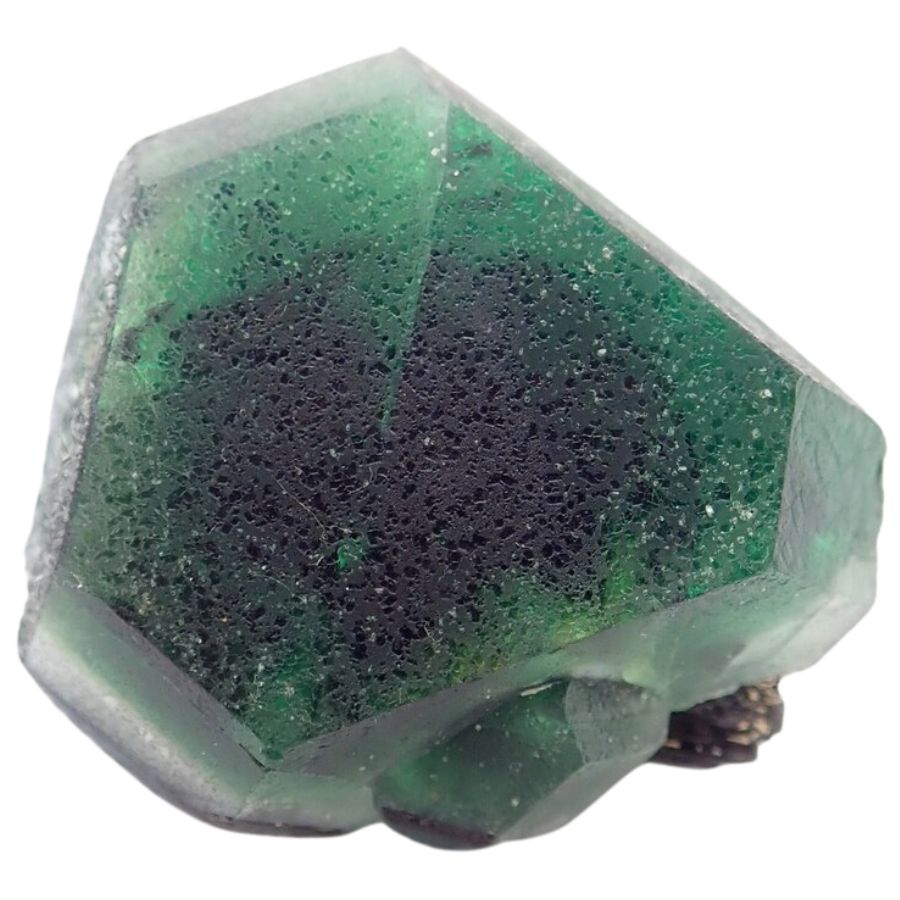
Fluorite is a vibrant and versatile mineral that adds a splash of color to Oklahoma’s geological palette. Made of calcium fluoride, it’s most famous for its wide range of colors, which can include purple, blue, green, yellow, or even a mix of these.
Fluorite usually forms in veins within rocks, especially in areas with a lot of geological activity. It crystallizes from hot fluids that move through the rocks and cool down, leaving behind these colorful crystals.
The crystals of fluorite are typically cubic, which means they form in the shape of cubes or sometimes octahedrons, which look like two pyramids stuck together.
The colors of these crystals come from different impurities in the mineral, and sometimes, when you shine a UV light on them, they can glow! These qualities make fluorite a favorite among rock collectors and enthusiasts.
Fluorite is also used in industry, particularly in the manufacturing of steel and aluminum, and in the production of certain types of glass and enamel. It’s even used in the making of hydrofluoric acid.
Where you can find fluorite in Oklahoma
- Davis, Murray County
- Wichita Mountains, Comanche County
- Troy, Johnston County
Galena
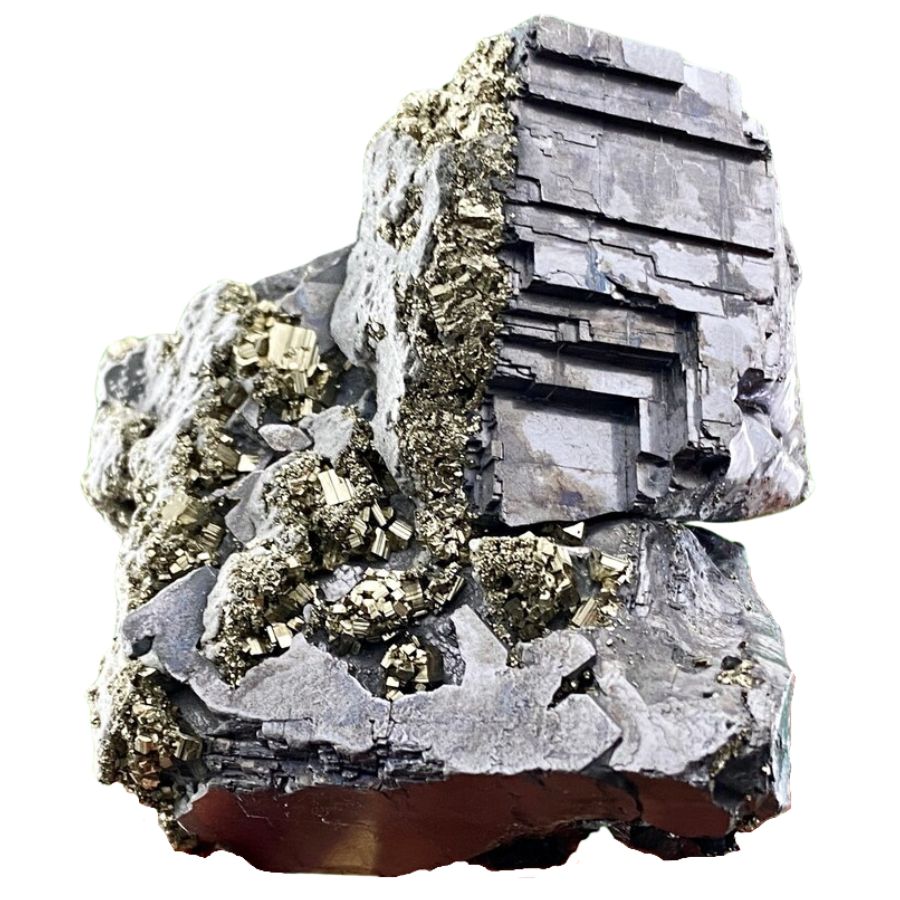
Galena is a fascinating mineral, especially among the rocks and minerals found in Oklahoma. It’s known for its shiny, metallic luster and its crystal form.
Galena is mainly lead sulfide, and it often forms cube-shaped crystals. These crystals can be quite shiny and are very heavy for their size because of the lead content.
This mineral typically forms in low-temperature ore veins. These are places underground where hot fluids carrying minerals move through cracks and spaces in rocks. When these fluids cool down, minerals like galena start to form.
More importantly, galena is the main source of lead, which is used in batteries, radiation shields, and in the past, in pencils and paint. Galena also contains silver sometimes, which enhances its value.
For mineral collectors, the distinct cubic shape and bright metallic luster make galena a desirable specimen. It’s a favorite among collectors for its unique look and heavy feel.
Where you can find galena in Oklahoma
- Picher Field, Ottawa County
- Granite Mountains, Kiowa County
- Eagletown, McCurtain County
Halite
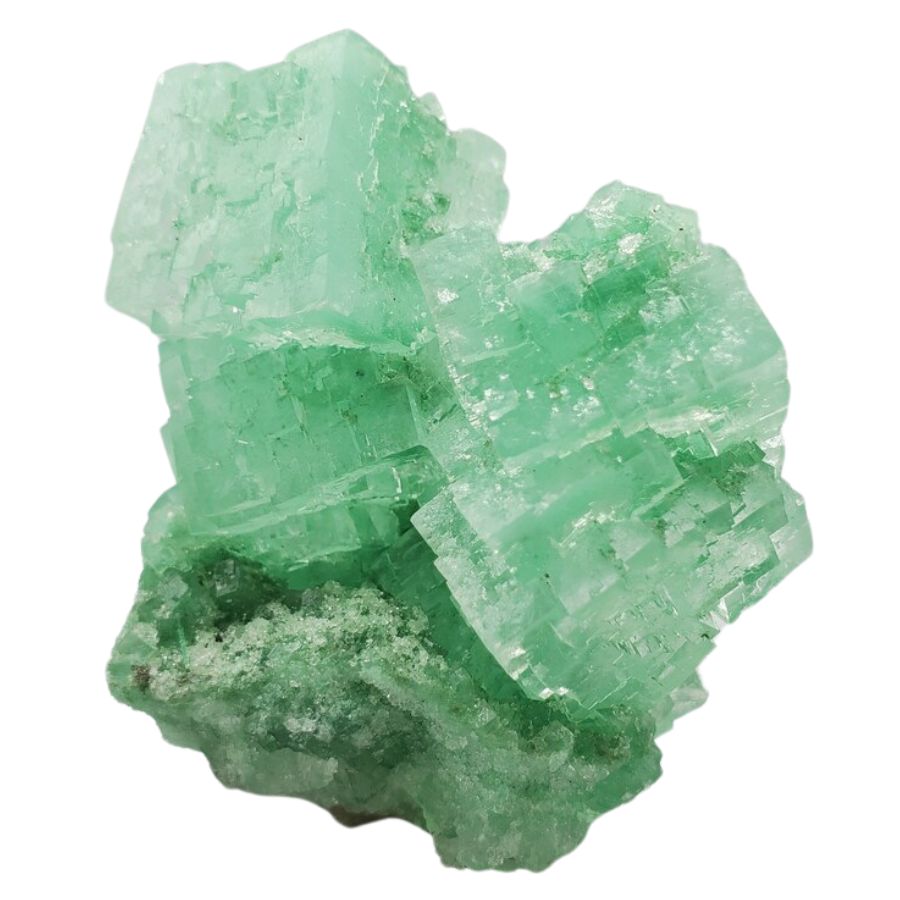
Halite, commonly known as rock salt, is an interesting mineral found in various parts of Oklahoma. It’s made entirely of sodium chloride, the same stuff that’s in table salt.
It forms when salty water, like from a sea or a salt lake, evaporates and leaves the salt behind. When halite forms close to the surface, it can create vast beds of salt, which are mined for various uses.
This mineral is usually clear or white, but it can also be blue, purple, pink, or yellow depending on impurities.
Halite often forms cubic crystals, which can be really cool to see. These crystals can range in size from very small to quite large, sometimes even several feet across.
The value of halite comes from several different areas. First, it’s a major source of salt, which is used in cooking and preserving food. Salt is also important for de-icing roads in winter and in the chemical industry.
For collectors, halite’s crystals are attractive and interesting, especially the colored varieties. It’s also a great mineral for learning about how evaporation can form minerals.
Where you can find halite in Oklahoma
- Freedom, Woods County
- Harper County
- Washington County
Magnetite
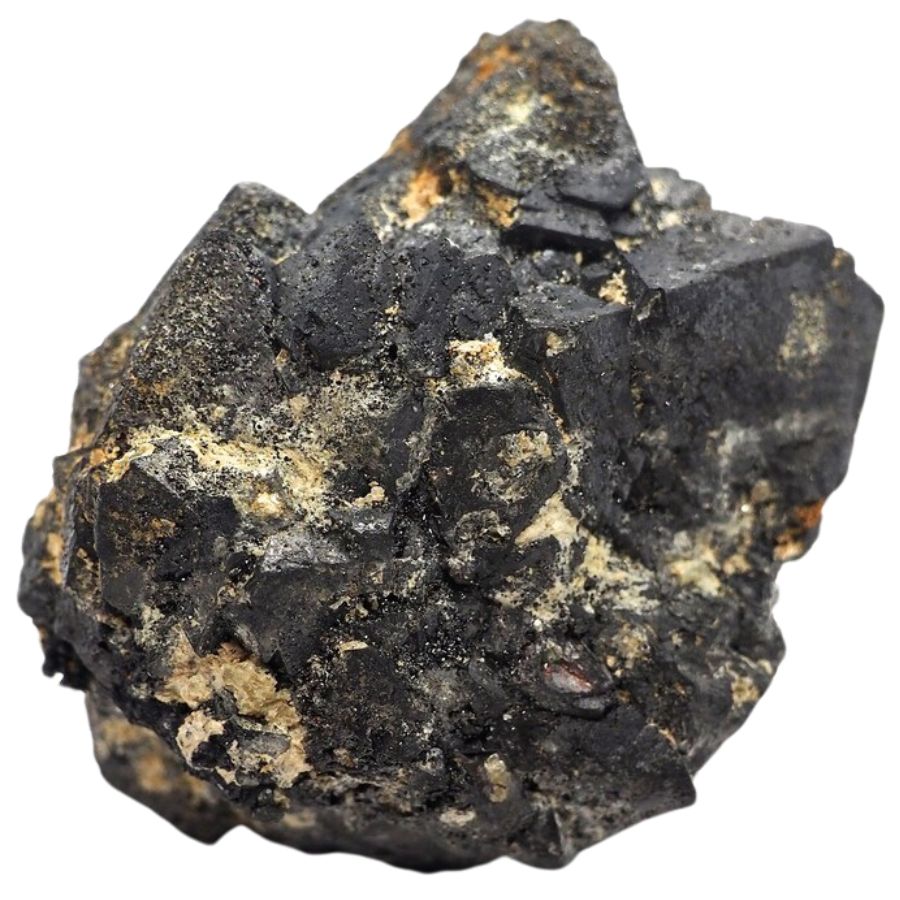
Magnetite is known for its strong magnetic properties. It’s made up of iron and oxygen, forming iron oxide, and is often black or brownish-black in color.
It forms in various ways, but most commonly, it’s found in igneous and metamorphic rocks. In Oklahoma, it can be found in the state’s mountainous regions, where these types of rocks are more common.
One of the coolest things about magnetite is its natural magnetism. If you hold a magnet near it, the magnetite will stick to the magnet, which is pretty neat to see. This property is due to the way iron atoms are aligned in the mineral.
These magnetic properties make magnetite useful in many industrial applications, like in the production of iron and steel. It’s also used in certain types of electronics and as a catalyst in chemical reactions.
Where you can find magnetite in Oklahoma
- Wichita Mountains, Comanche County
- Quartz Mountain, Greer County
- Granite Mountains, Kiowa County
Pyrite
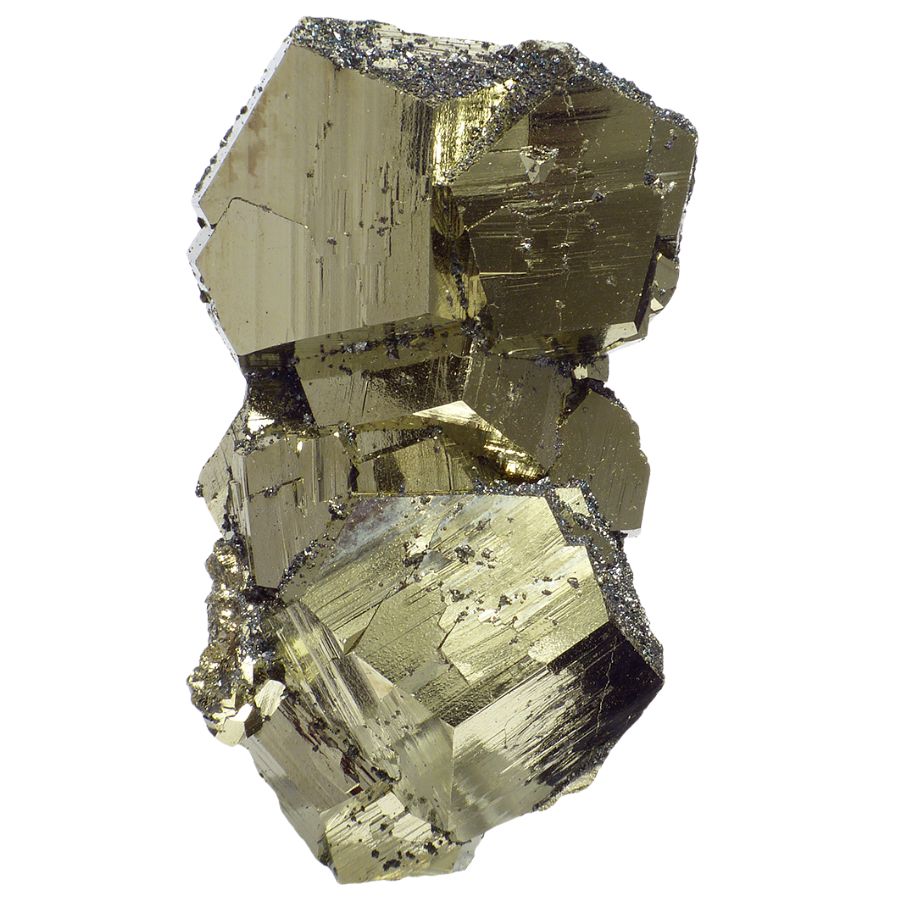
Pyrite, often called “fool’s gold,” is a shiny, metallic-looking mineral that’s found in various places in Oklahoma. The shiny, gold-like appearance of pyrite is what gives it its nickname, but unlike real gold, pyrite is harder and more brittle.
This mineral often forms in square or nearly perfect cube shapes, which is pretty unique and cool to see. It’s made of iron and sulfur, forming a compound called iron sulfide.
Pyrite forms in several ways, but most commonly, it’s found in areas where there’s been volcanic activity or where hot, mineral-rich fluids move through rocks underground.
These fluids carry sulfur and iron, which then come together to form pyrite crystals.
In Oklahoma, pyrite is often found alongside other minerals like quartz and galena.
Aside from its striking appearance, pyrite has some practical uses. It’s sometimes used in the production of sulfuric acid and in the manufacturing of paper. In the past, pyrite was even used to create sparks for starting fires.
Where you can find pyrite in Oklahoma
- John Beaver Mine, Ottawa County
- Lake Texoma, Bryan County
- Quay North, Pawnee County
Rose rock
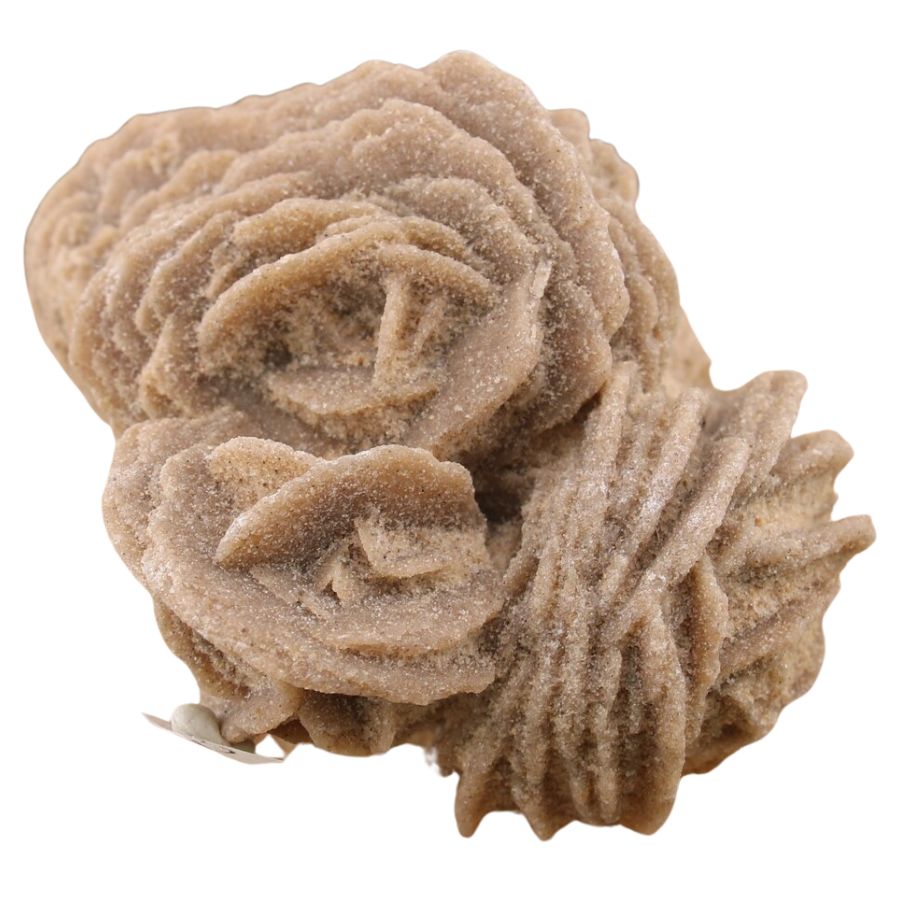
Rose rock, or barite rose, is a symbol of Oklahoma’s unique geology and a fascinating natural formation. These rocks look like rose petals, but they are actually made of barite, a mineral, and sand grains.
Rose rocks form when barite from underground water crystallizes around sand grains. As the water evaporates, these crystals grow in the shape of a rose.
The size of rose rocks can vary, some being as small as a pea, while others are as big as a few inches across. These rocks also have a reddish-brown color, which comes from the sand particles.
The way these barite crystals cluster together is what makes each rose rock unique. No two is exactly the same, which adds to their charm.
The rarity of rose rocks in other parts of the world adds to their value. While they are not the rarest rocks, their unique shape and the specific conditions required for their formation make them a special find.
Where you can find rose rock in Oklahoma
- Lake Thunderbird area, Norman, Cleveland County
- Red Bed Mining District, Garvin County
- Picher Field, Ottawa County
The Gemstones Found In Oklahoma
You can learn more about the gems that you can find in the state with the help of our guides:
Adularia
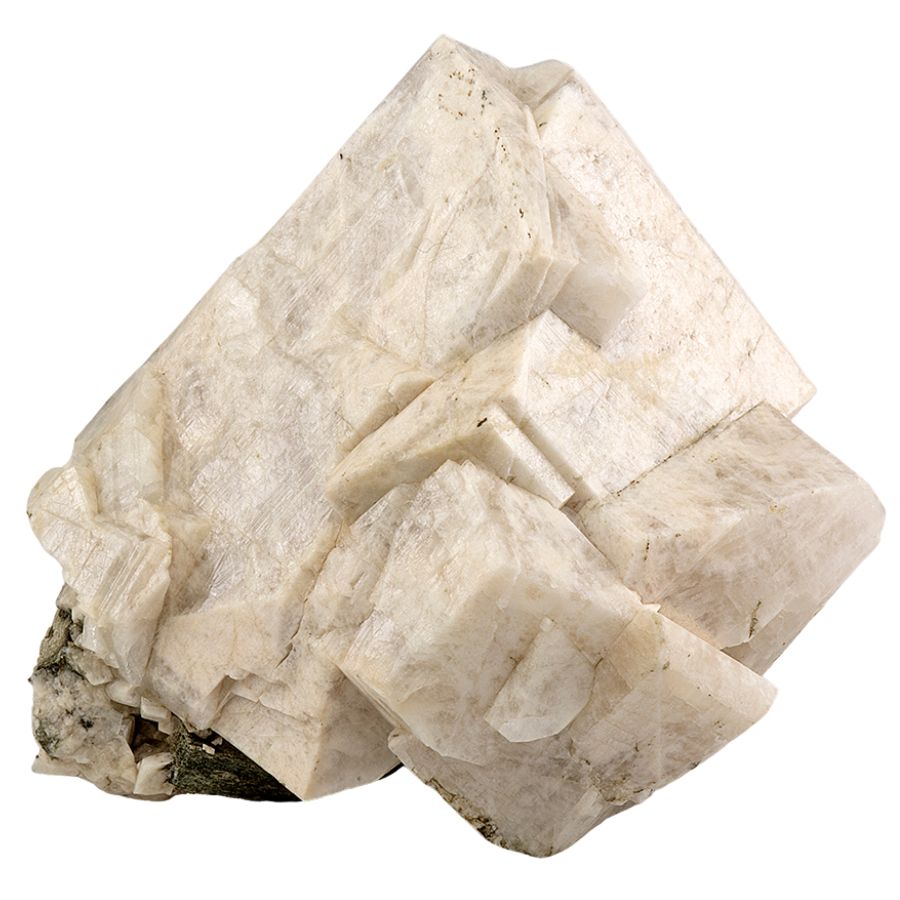
Adularia is a variety of orthoclase, which is a type of feldspar. It’s known for its creamy or pearly luster, and it often has a beautiful, milky sheen. This mineral is usually white or colorless, but it can also have shades of gray, yellow, or pink.
It forms in low-temperature environments, typically in cracks and cavities within rocks, where it grows slowly over time.
One of the most interesting things about adularia is the way it reflects light. This effect, known as adularescence, gives it a glowing, moon-like appearance, especially when the mineral is cut and polished.
This unique luster makes adularia attractive for jewelry and decorative items, making it popular among collectors and artisans.
Where you can find adularia in Oklahoma
Agate
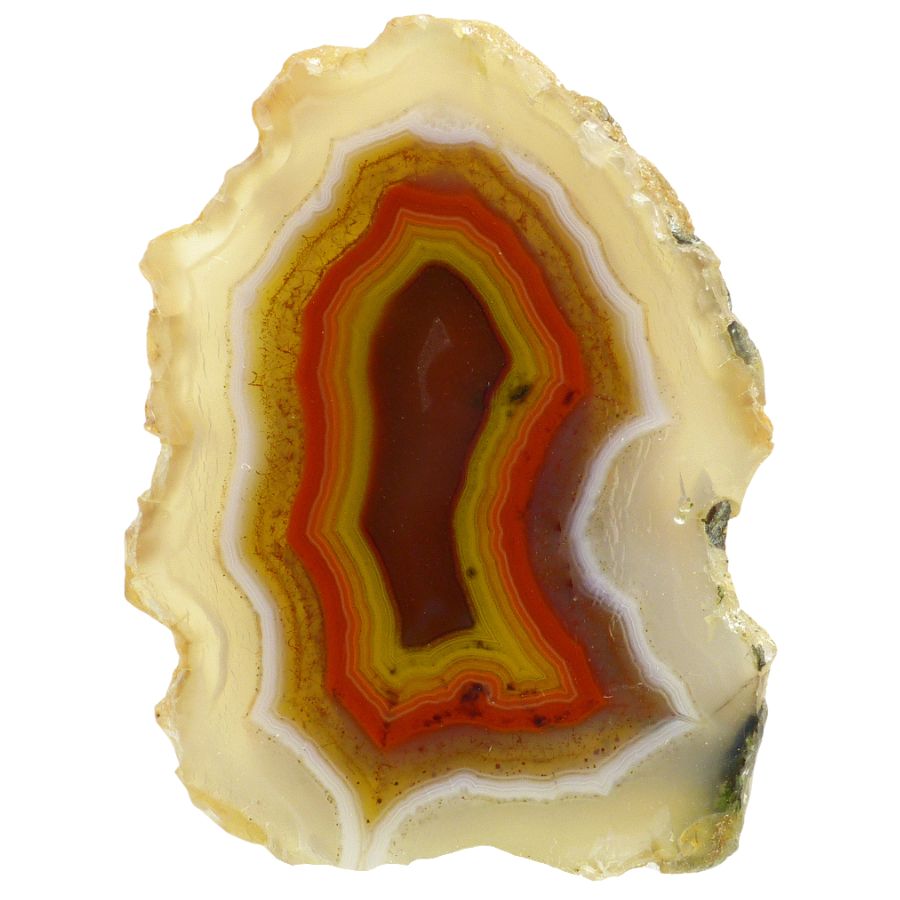
Agate is a form of quartz that’s known for its stunning patterns and array of colors, which can include red, blue, brown, and white.
It forms when silica-rich water fills cavities in rocks, and over time, layers of silica settle and harden into bands of quartz.
These bands create the unique patterns that make each agate piece unique. When the agate is cut and polished, these patterns become even more striking, revealing intricate designs that catch the eye.
The value of agate is based on a variety of factors. Some pieces can be inexpensive, while others can fetch a high price.
It’s popular for jewelry and decorative pieces, as it can be cut into various shapes and sizes. Collectors and enthusiasts also value agate for its uniqueness; no two pieces are exactly the same.
Where you can find agate in Oklahoma
- Seminole County
- Kenton, Cimarron County
- Buffalo, Harper County
Celestine
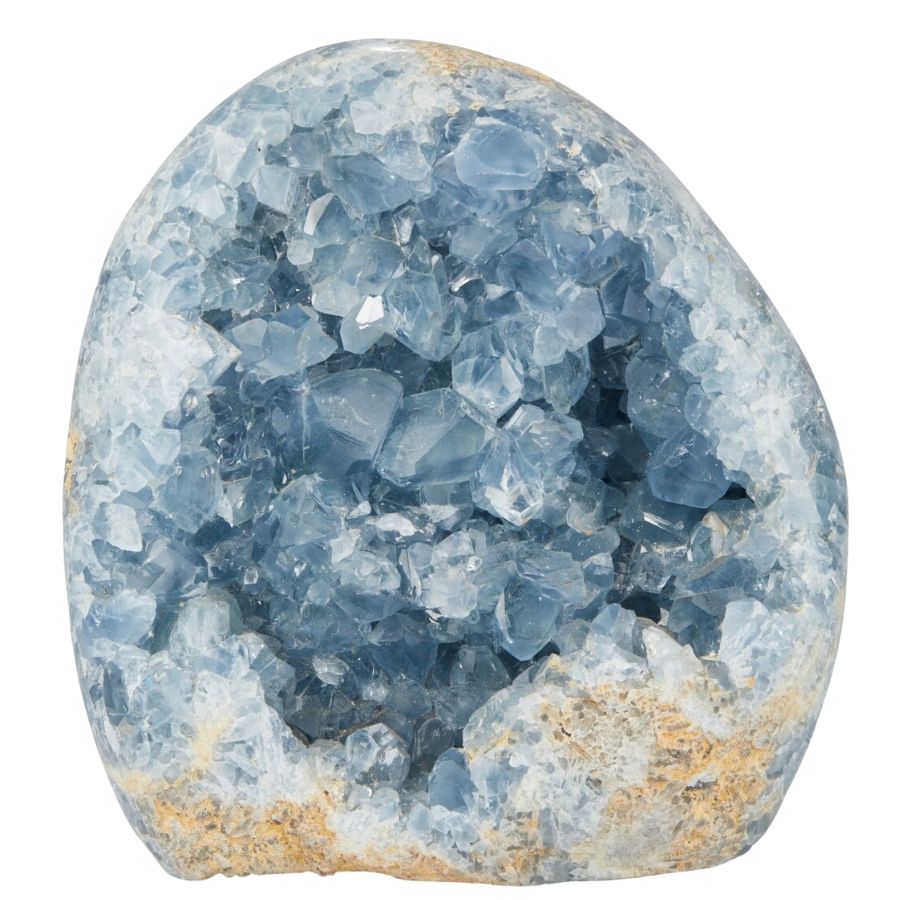
Celestine, also known as celestite, is primarily composed of strontium sulfate. It’s well-known for its striking blue color, although it can also be colorless, white, or pale green.
It forms in sedimentary rocks, particularly in areas where gypsum and limestone are present. Mineral-rich water flows through these types of rocks, leaving behind celestine crystals as the water evaporates.
Thus, celestine is typically found in small pockets or cavities within rocks. These crystals can be quite large and transparent to translucent, with a glassy luster.
The striking blue color of this gem makes it a favorite among collectors and those who use minerals for decorative purposes. Celestine is also important in industrial applications, as strontium extracted from it is used in making fireworks and in certain metal alloys.
Where you can find celestine in Oklahoma
- Washita County
- Southard, Blaine County
- Buffalo, Harper County
Malachite

Malachite is made up of copper carbonate hydroxide, and it’s known for its bright green hue and beautiful banded patterns. It forms in the upper parts of copper deposits where copper minerals are exposed to oxygen and water.
This process creates malachite’s unique green color and layered appearance.
It often grows as crusts or botryoidal masses, which means it looks like a bunch of grapes. The rich green color of malachite varies from light to dark, and it often has natural bands or circles, which make each piece unique.
When polished, malachite’s bands create stunning patterns, making it a favorite for jewelry and decorative items.
Where you can find malachite in Oklahoma
- Eagle Picher Mine, Jackson County
- Red Bed Mining District, Garvin County
- Flat Top Mountain, Kiowa County
Selenite
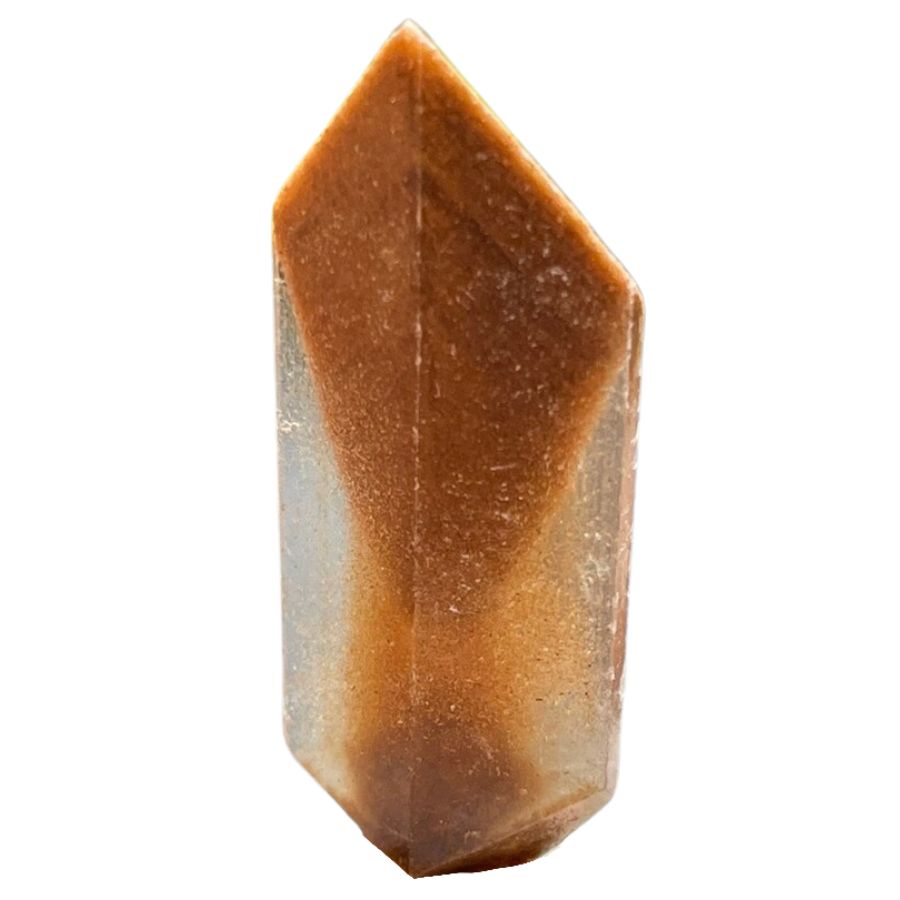
Selenite, a crystal-clear form of gypsum, is one of the fascinating gemstones found in Oklahoma. This mineral, composed of calcium sulfate dihydrate, is celebrated for its transparency and delicate, pearly luster.
It forms in evaporative environments, where salty water evaporates and leaves behind minerals. Selenite is also soft, making it easy to scratch with just a fingernail.
In Oklahoma, particularly in the Great Salt Plains, selenite crystals form unique hourglass shapes. This is a rare phenomenon.
Hourglass selenite adds to the state’s geological richness. Its rarity and the unique conditions required for its formation make it a prized find for anyone interested in geology.
Where you can find selenite in Oklahoma
- Great Salt Plains, Alfalfa County
- Greer County
Silver
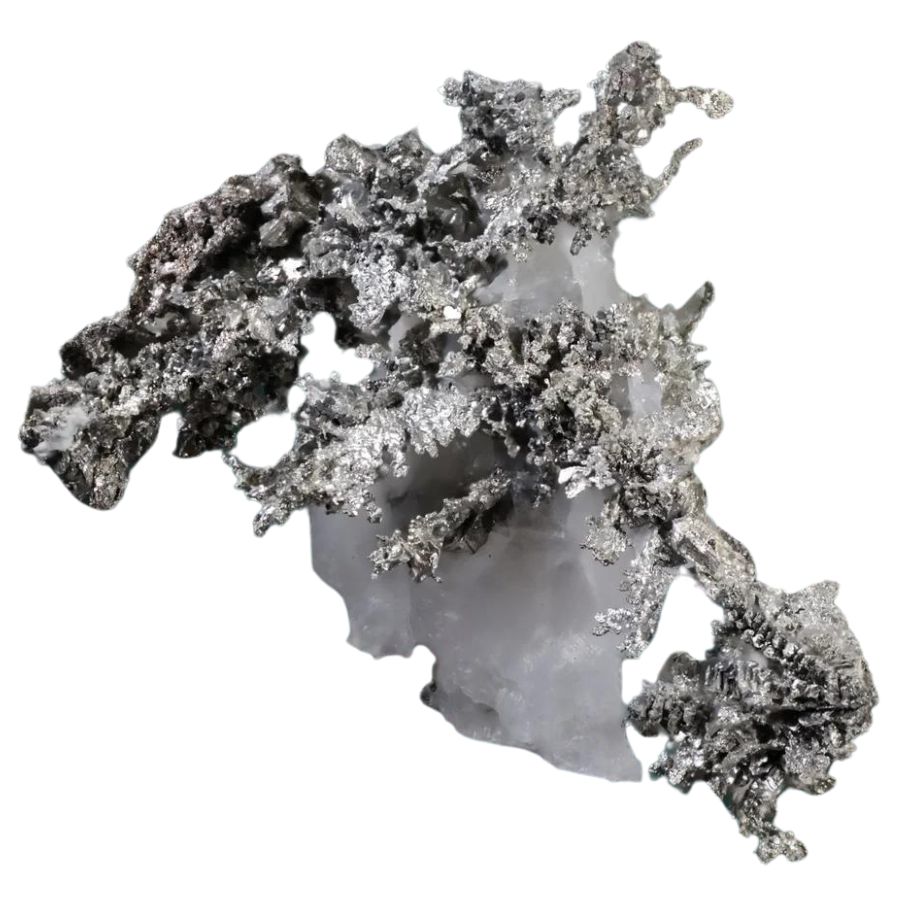
Silver is a precious metal known for its shiny, white appearance and flexibility. It forms when hot fluids circulate through the rocks deep inside the Earth, dissolving various minerals including silver.
As these fluids cool down and move toward the surface, silver and other minerals are left behind, forming deposits.
In Oklahoma, silver can be found in its pure form, known as native silver, but it’s more commonly found combined with other elements. These combinations, or ores, often include minerals like galena (lead ore) and chalcopyrite (copper ore).
The process of extracting silver from these ores involves crushing the rock and using chemicals to separate the silver.
Silver’s brilliant luster and ability to reflect light make it highly desirable for jewelry and decorative items. This metal is also an excellent conductor of electricity, making it valuable in many electronic and industrial applications.
Where you can find silver in Oklahoma
- Eagle Picher Mine, Jackson County
- Stillwater East, Payne County
Zircon
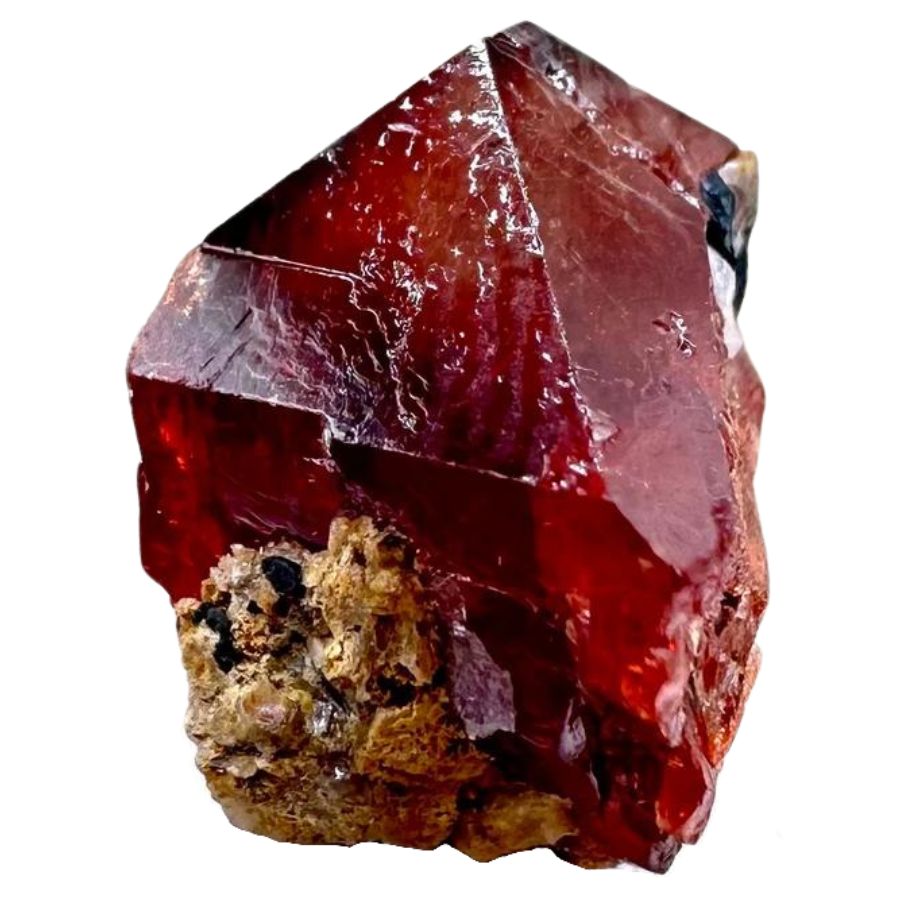
Zircon is a zirconium silicate, known for its high resistance to heat and corrosion. it typically forms in igneous rocks and metamorphic rocks.
In Oklahoma, zircon is often discovered in small, colorful crystals. These crystals can range in color from clear to a variety of shades like blue, yellow, red, and brown.
One of the most interesting things about zircon is that it’s the oldest known mineral on Earth. Some zircon crystals are even billions of years old!
Zircon’s durability and resistance to wear and tear make it a popular choice for jewelry. The range of colors and its ability to reflect light beautifully add to its appeal.
It’s also used in various industrial applications, such as in the manufacturing of ceramics and as a component in abrasives.
Where you can find zircon in Oklahoma
- Wichita Mountains, Comanche County
- Quartz Mountain, Greer County
- Granite Mountains, Kiowa County
The Crystals Found In Oklahoma
Learn more about how and where to find crystals in the state with the help of our guide:
Aragonite
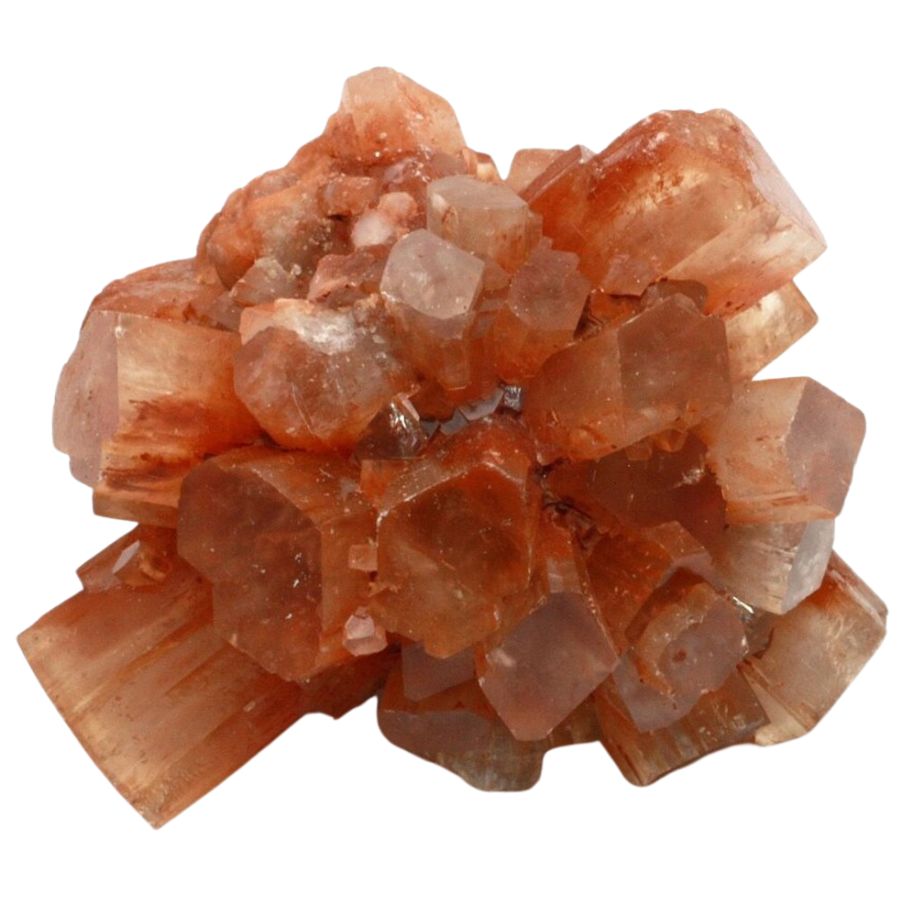
Aragonite is a unique and interesting mineral that can be found in Oklahoma’s diverse geological landscape. This mineral is made of calcium carbonate, the same material that forms limestone and marble.
Unlike these other forms, aragonite crystallizes in a different pattern, giving it distinct properties. Aragonite forms in various environments, including near hot springs and in caves as stalactites and stalagmites.
Its crystals are often small and needle-like, and they can be white, yellow, or even light green. What’s really cool about aragonite is that it can also form “twins,” which are mirror-image crystals growing together.
Aragonite crystals can thus be visually striking. With their unique shapes and colors, they’re a favorite among rock collectors.
However, aragonite is also used in the making of certain types of cement and as a soil conditioner. Aragonite’s role in Earth’s carbon cycle also makes it important for scientific study.
Where you can find aragonite in Oklahoma
- Cherry Canyon, Cotton County
Brochantite
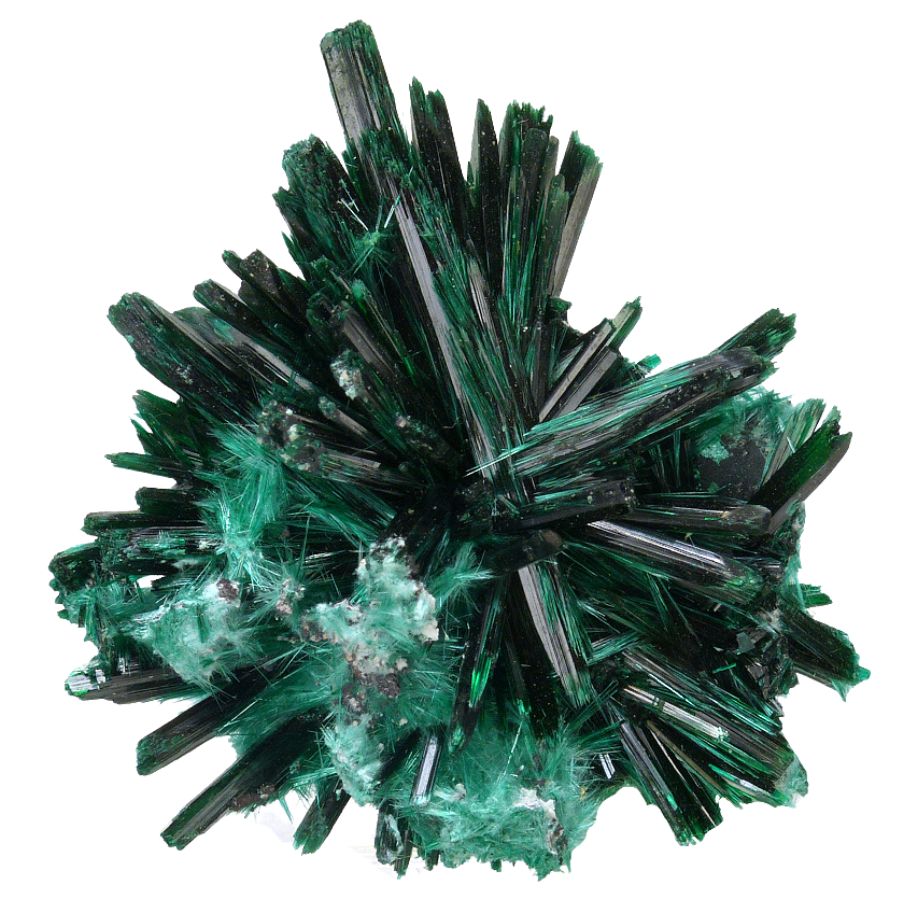
Brochantite is made up of copper sulfate hydroxide, with a striking, rich green color that comes from the copper content.
It typically forms in arid regions where copper-containing rocks are exposed to oxygen and sulfur, often in the upper parts of copper ore deposits.
This process allows brochantite to crystallize, sometimes in needle-like forms or as fine, velvety coatings on rocks. These green crystals are usually small but can be quite eye-catching due to their bright color and shiny luster.
Brochantite offers insight into the process of oxidation in copper ores. This mineral is also studied for its potential in environmental applications, like removing pollutants from water.
Where you can find brochantite in Oklahoma
- Paoli, Garvin County
Brookite
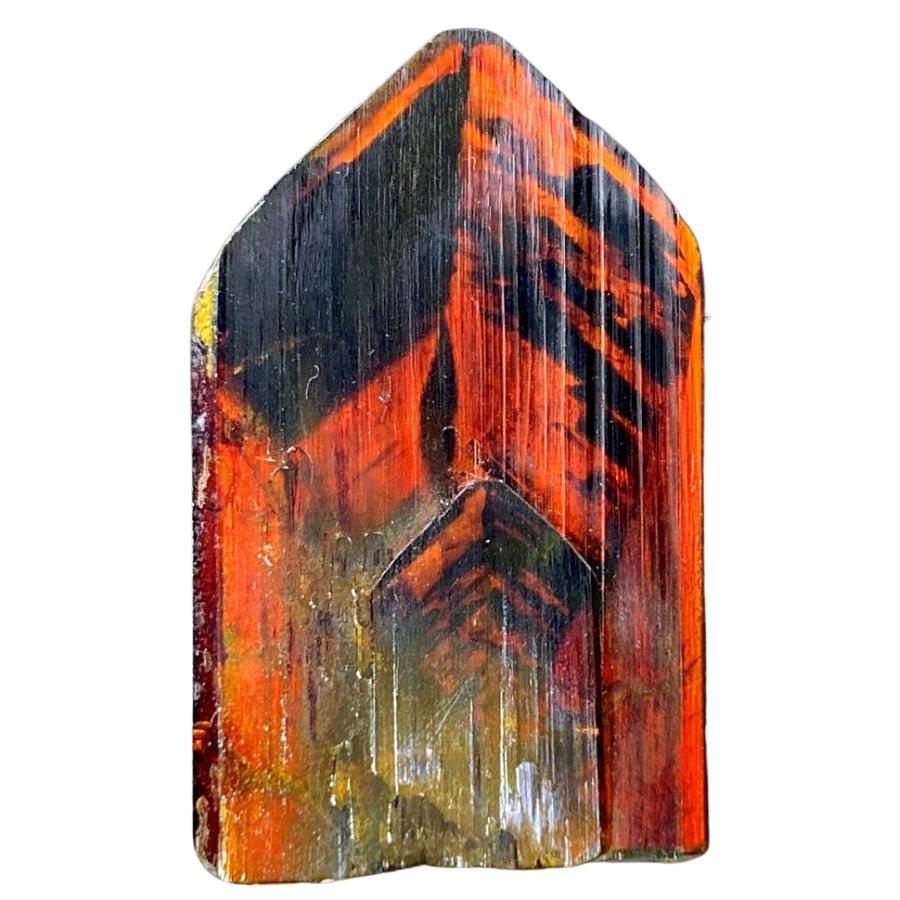
Brookite is a form of titanium dioxide and is often seen alongside other minerals like quartz and rutile. It forms under high temperatures and pressures, typically in mountainous regions where the Earth’s crust is changing and moving.
The unique thing about brookite is its crystal structure. It often forms thin, flat crystals that have a metallic or silky sheen. These crystals can be quite striking when they catch the light.
Brookite is not as common as some other minerals, which makes finding it in Oklahoma an exciting experience for rock enthusiasts.
Because of its rarity and unique crystal formation, brookite is a sought-after specimen for mineral collectors.
It’s also valuable for scientific study, helping researchers understand more about how titanium minerals form and change under different conditions.
In addition, brookite is studied for its potential use in certain technologies, like in photovoltaic cells for solar panels.
Where you can find brookite in Oklahoma
- Lugert, Kiowa County
Chalcopyrite
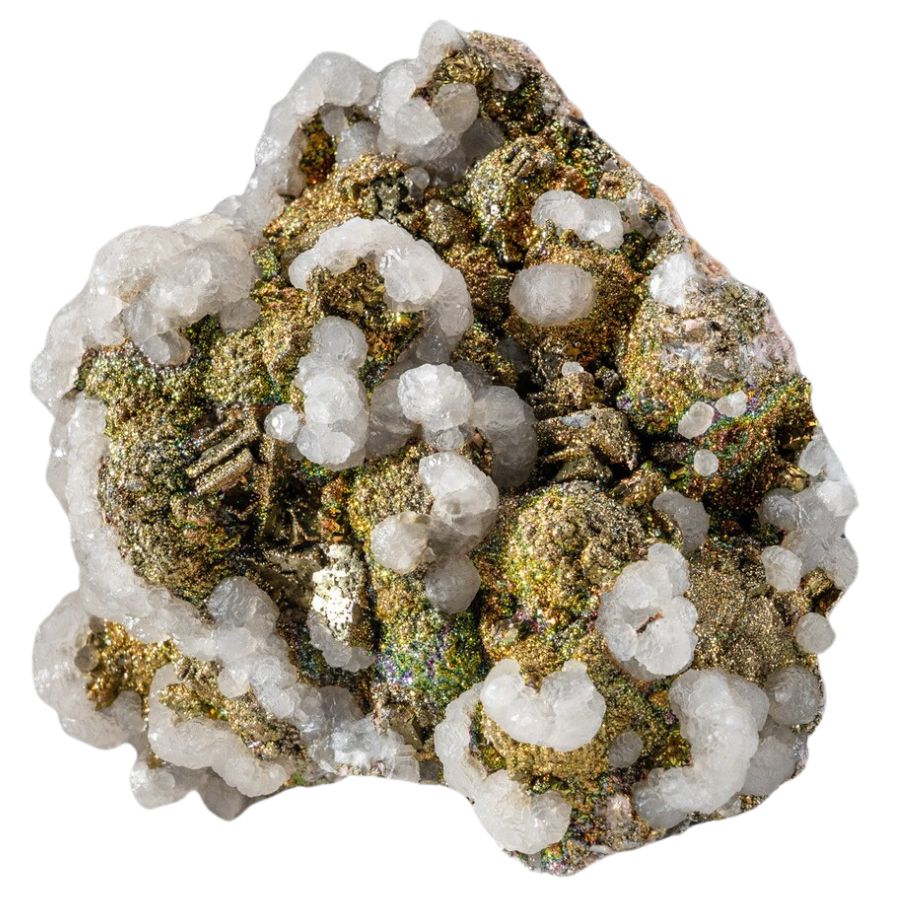
Chalcopyrite is a copper iron sulfide, and it’s the most common source of copper in the world. It’s known for its shiny, brass-yellow color that can sometimes tarnish to a dull, greenish hue.
It usually forms in high-temperature environments, like in and around volcanic activities. This mineral can also form deep underground where hot fluids circulate through cracks in the rocks.
These fluids carry the elements needed to form chalcopyrite, and when they cool down, the mineral starts to crystallize.
In Oklahoma, chalcopyrite can often be found in association with other minerals like quartz and pyrite.
Because it’s a major source of copper, chalcopyrite is very important in the mining industry. Copper is used in so many things in our daily lives, like electrical wiring and plumbing.
The bright, metallic luster of chalcopyrite also makes it attractive for mineral collectors. It’s often collected for its beauty and interesting crystal shapes.
Where you can find chalcopyrite in Oklahoma
- Picher Field, Ottawa County
Faden quartz
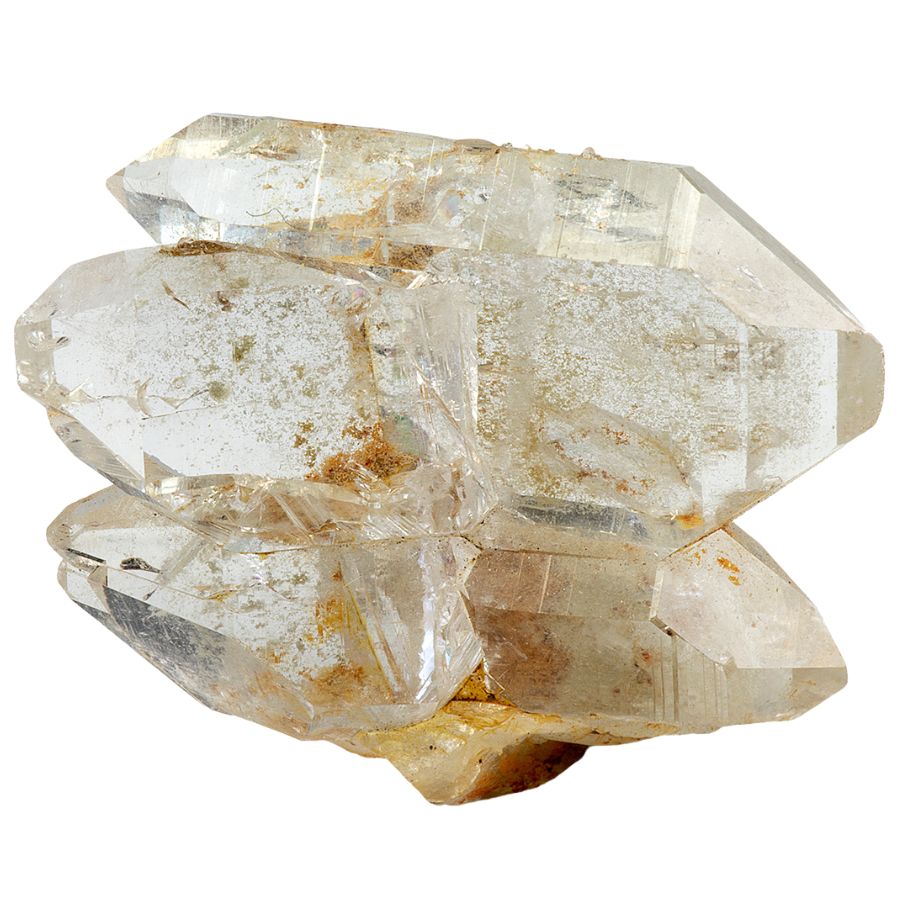
Faden quartz is a unique type of quartz crystal that’s part of the rich variety of crystals found in Oklahoma. These crystals are easily identified by the white, thread-like line running through them, which is known as a “faden line.”
In Oklahoma, faden quartz is often found in areas with geological activity, such as near faults or shifting plates. These crystals can vary in size, with some being quite small and others growing to several inches long.
Faden quartz forms in fissures or cracks in the Earth where the crust is stretching and moving. As these cracks open and close, the quartz crystals grow around the faden line, creating their distinctive appearance.
The clarity of faden quartz can range from completely clear to cloudy, and this variety adds to their appeal.
Collectors and enthusiasts often seek out faden quartz for its distinctive look and the story it tells about geological processes. For scientists, these crystals are important for studying the history of Earth’s crust and the movements that shape it.
Where you can find Faden quartz in Oklahoma
- Stovall Trail, McCurtain County
Sphalerite
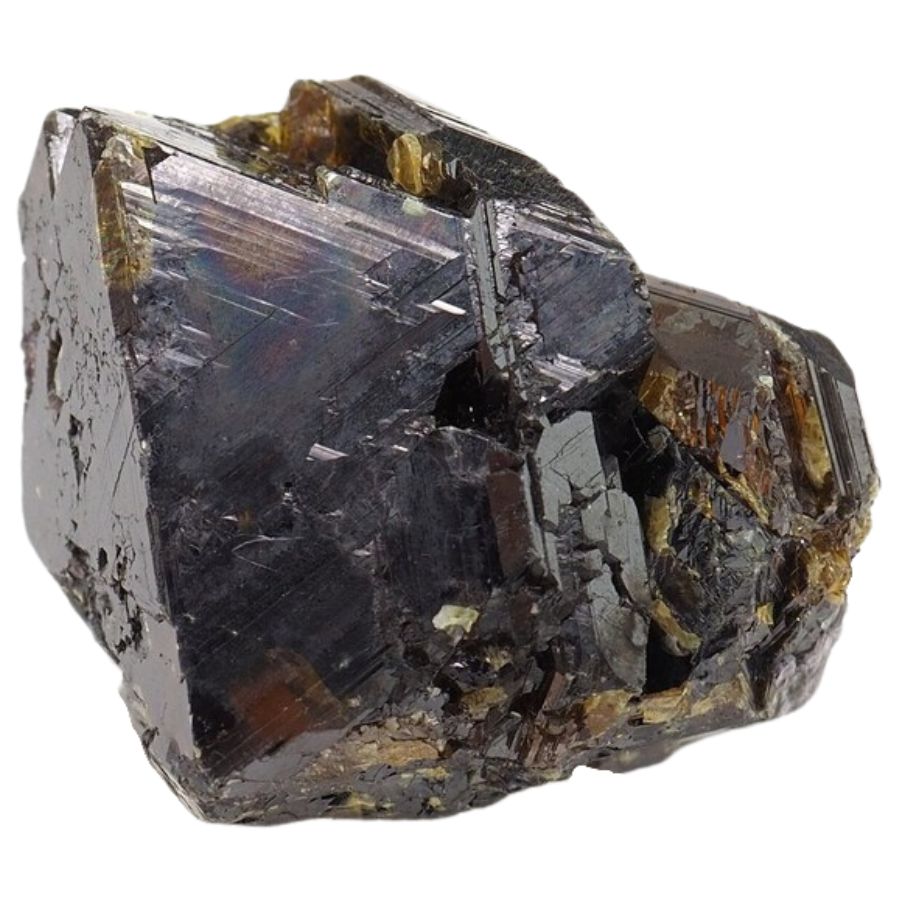
Sphalerite is primarily composed of zinc sulfide, but often contains traces of other elements like iron, which can change its color and appearance. Typically, sphalerite can be found in a range of colors, from yellow and brown to red and black.
It’s often found in association with other minerals like galena (lead sulfide) and chalcopyrite (copper iron sulfide).
Sphalerite is the primary ore of zinc, which means it’s the main source of this important metal used in galvanizing steel and making brass. It’s also used in batteries.
For mineral collectors, sphalerite is prized for its bright luster and interesting crystal forms. Its range of colors and association with other minerals make it a fascinating subject for collection and study.
Where you can find sphalerite in Oklahoma
- Picher Field, Ottawa County
Strontianite
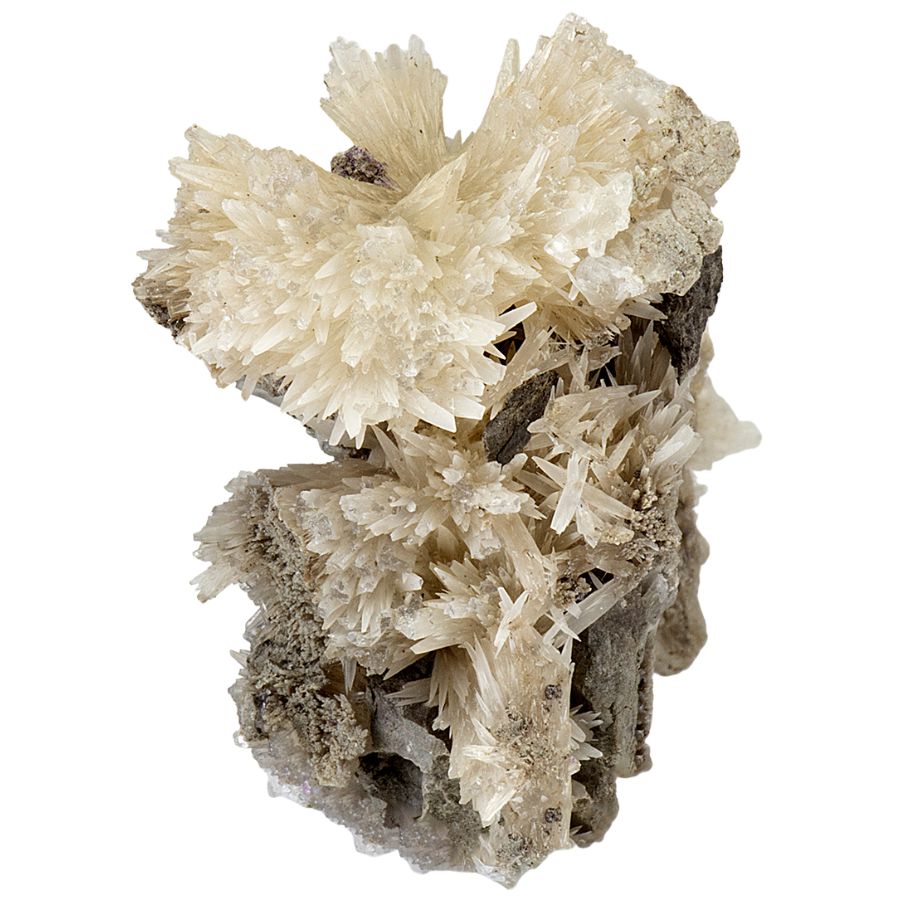
Strontianite is composed of strontium carbonate and often forms in small, white, or pale green crystals. The crystals of strontianite are often small, but they can form into beautiful, intricate shapes.
It typically develops in sedimentary rocks and can be found in areas with limestone formations, as limestone is a common place for it to form.
One of the interesting things about strontianite is its reaction to acids. When you put a drop of acid on strontianite, it fizzes, which is a cool reaction to watch.
This reaction is due to the carbonate part of strontianite breaking down and releasing carbon dioxide gas.
Strontianite is valuable because it’s an important source of strontium. Strontium is used in making certain kinds of fireworks, where it creates bright red colors.
Where you can find strontianite in Oklahoma
- Corn, Washita County
The Most Valuable Rocks and Minerals in Oklahoma
These are some of the most valuable rocks and minerals in the state. They’re not just beautiful to look at; they hold significant value for various reasons.
Copper
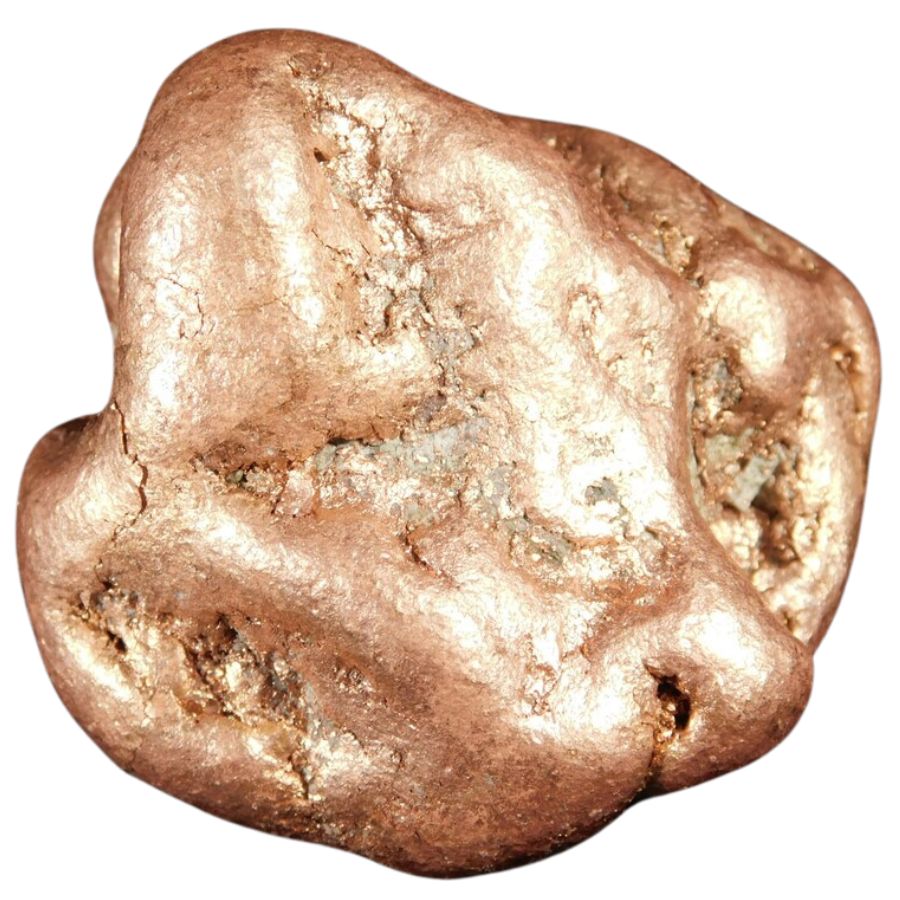
Copper is a versatile and widely used metal. It’s known for its distinctive reddish-brown color and excellent electrical and thermal conductivity.
In Oklahoma, copper can be found as native copper, which is the metal in its pure form. It can also be found in copper ores, where it’s combined with other elements.
The nuggets of native copper are usually small and sometimes form in interesting shapes. Copper’s malleability, which means it can be easily shaped and stretched, makes it incredibly useful for a wide range of applications.
This metal is essential in electrical wiring, plumbing, and in the creation of alloys like bronze and brass. Its antibacterial properties also make it valuable in medical and sanitary applications.
In addition, it has been used by humans for thousands of years, in tools, jewelry, and coins.
Where you can find copper in Oklahoma
- Sandy Creek, Comanche County
- Hillsdale, Garfield County
- Paoli, Garvin County
Dolomite
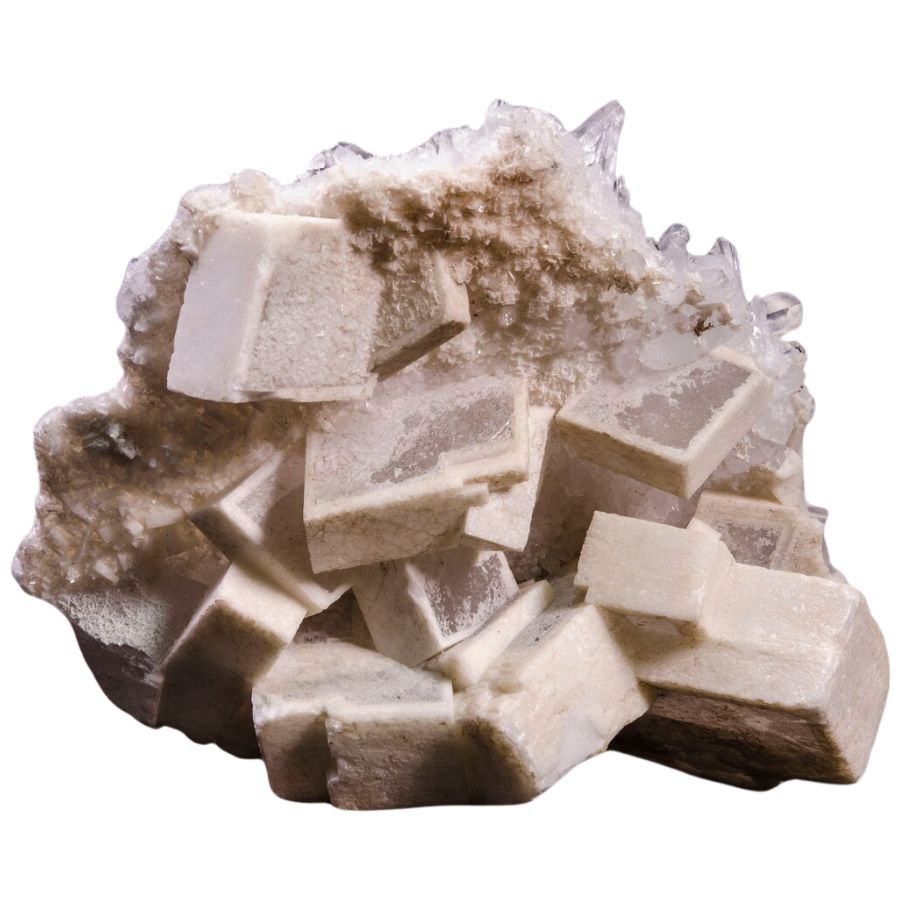
Dolomite is a unique and important mineral that can be found among the valuable rocks in Oklahoma. It’s composed of calcium magnesium carbonate, and it often forms in a sedimentary environment.
Dolomite can look quite similar to limestone but has some different properties due to its magnesium content. It typically forms when magnesium-rich water interacts with limestone, causing a chemical change that results in dolomite.
However, this mineral is harder than limestone, which means it doesn’t scratch as easily and can withstand weathering better. This quality makes dolomite a popular choice for the production of cement and as a building material.
Other than construction, dolomite is also important in agriculture. It’s used to adjust the pH of soil, helping plants grow.
Where you can find dolomite in Oklahoma
- Picher Field, Ottawa County
- Fairview, Major County
- Wichita Mountains, Comanche County
Hematite
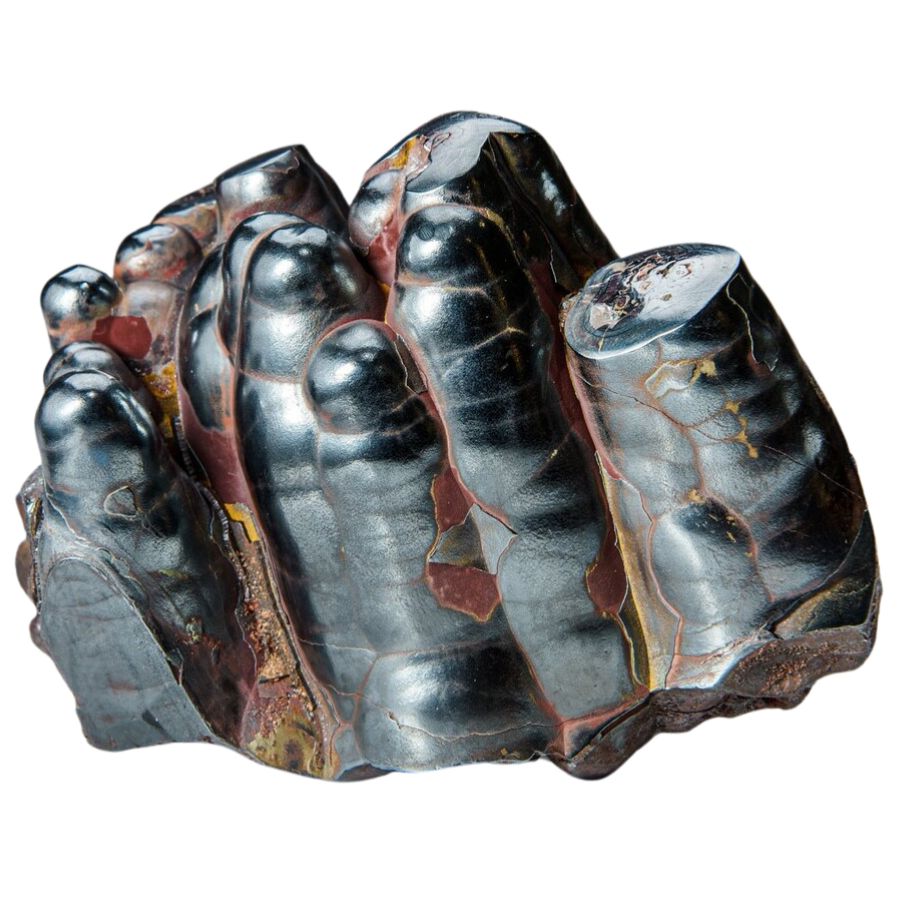
Hematite is a common and significant mineral, known for its shiny, metallic appearance and reddish-black color. This mineral is an iron oxide, and it forms in a variety of geological environments, often in places with lots of iron and water.
It can be found in sedimentary rocks, where it forms as a result of the oxidation, or rusting, of iron minerals. It’s typically found in the form of small, shiny crystals or as smooth, rounded pebbles.
One of the most interesting things about hematite is that it leaves a reddish streak when scratched across a hard surface. This unique property makes it easy to identify, even for amateur rock collectors.
Hematite is also known for being quite heavy for its size, which is a giveaway of its high iron content.
It’s a major ore of iron, which makes it incredibly important in the steel-making industry
Where you can find hematite in Oklahoma
- Perry, Noble County
- Kenton, Cimarron County
- Granite Mountains, Kiowa County
Petrified wood
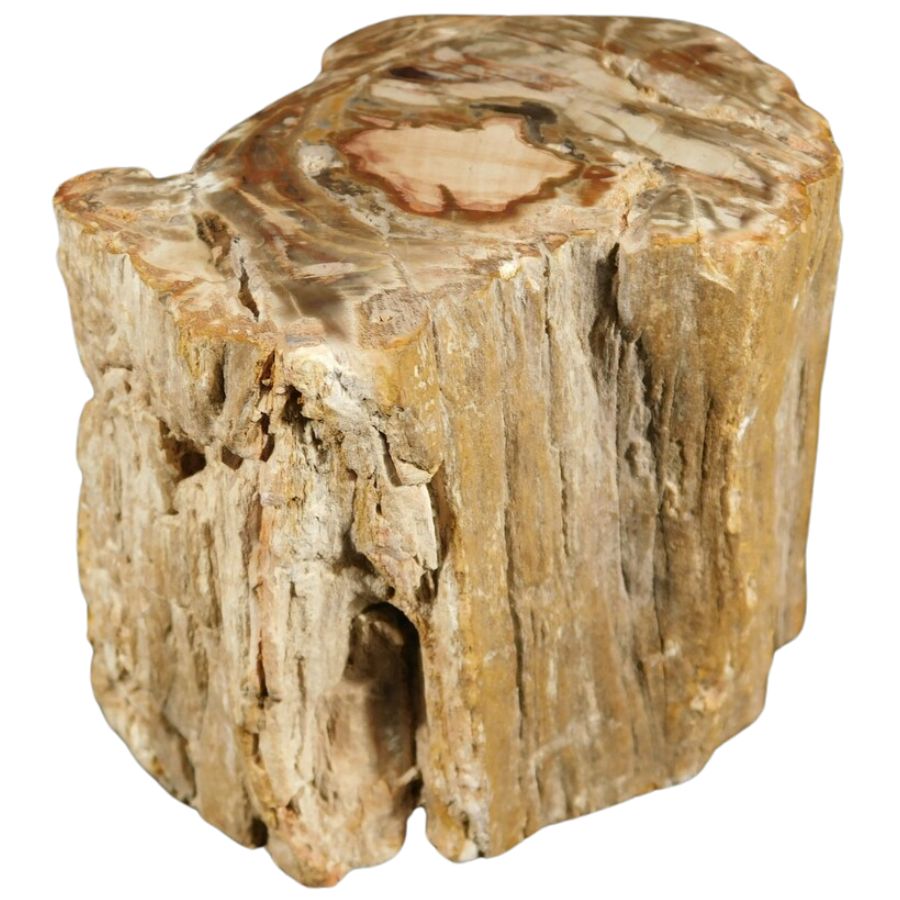
The transformation of petrified wood happens over millions of years when wood gets buried under sediment and is cut off from oxygen.
The lack of oxygen slows down the decay process, and mineral-rich water flowing through the sediment replaces the original wood cells with minerals like silica.
Over time, this process, called permineralization, turns the wood into a stone-like material, preserving its original structure. Petrified wood often shows intricate details of the tree, including rings and bark patterns.
This preserved detail makes each piece unique and a snapshot of ancient forests.
Petrified wood provides a tangible connection to the distant past, giving us insights into the plant life and environmental conditions millions of years ago. For collectors, the uniqueness of each piece makes petrified wood a sought-after item.
Where you can find petrified wood in Oklahoma
- Lugert, Kiowa County
- Arkansas River
- Flint Hills
How to Identify The Rocks and Minerals You Find
Simple techniques such as examining the hardness, checking for crystal formations, and observing color can help distinguish one rock from another. These are five easy ways you can identify an unknown mineral:
Crystal Form and Mineral Habit
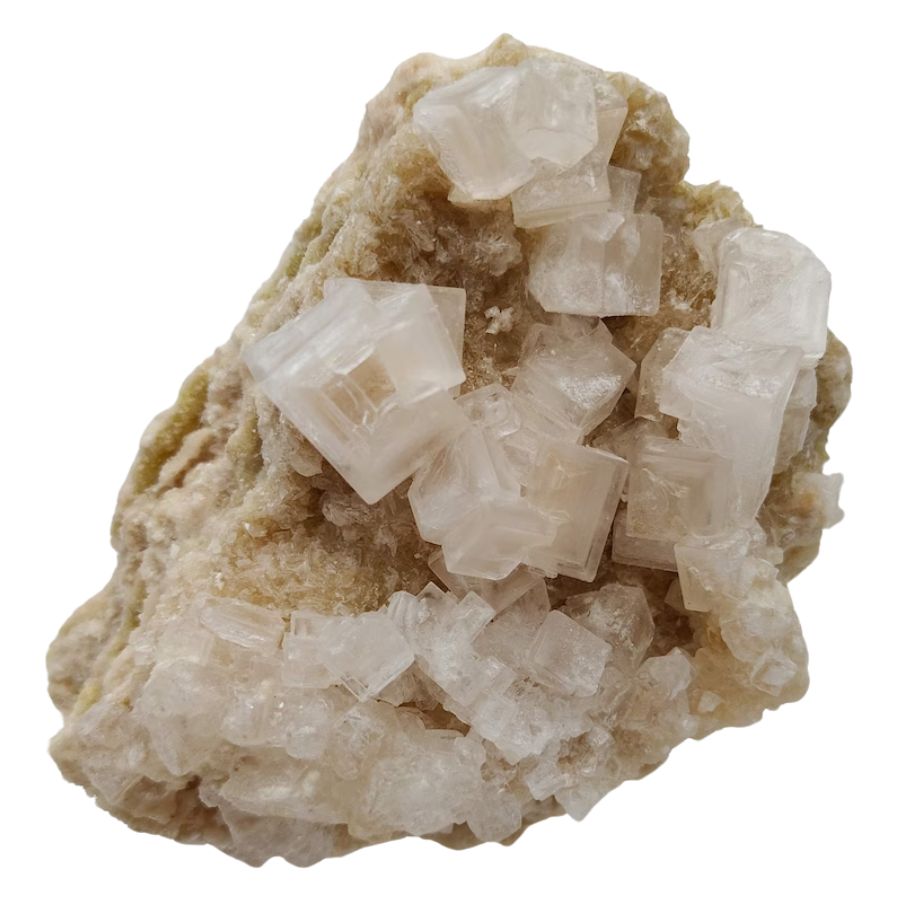
Each mineral grows and forms in specific ways, which scientists call its “mineral habit.”
For example, some minerals, like halite (which is table salt), form in cubes, while others, like pyrite, also known as fool’s gold, form in perfect cubes or octahedrons.
These habits give us hints about what kind of mineral we’re looking at.
The environment where a mineral forms also influences its habit and crystal structure. Slow cooling of molten rock might create large, well-formed crystals, while quick cooling might result in smaller, less distinct ones.
In sedimentary environments, minerals might form in layers or rounded concretions.
Magnet Test
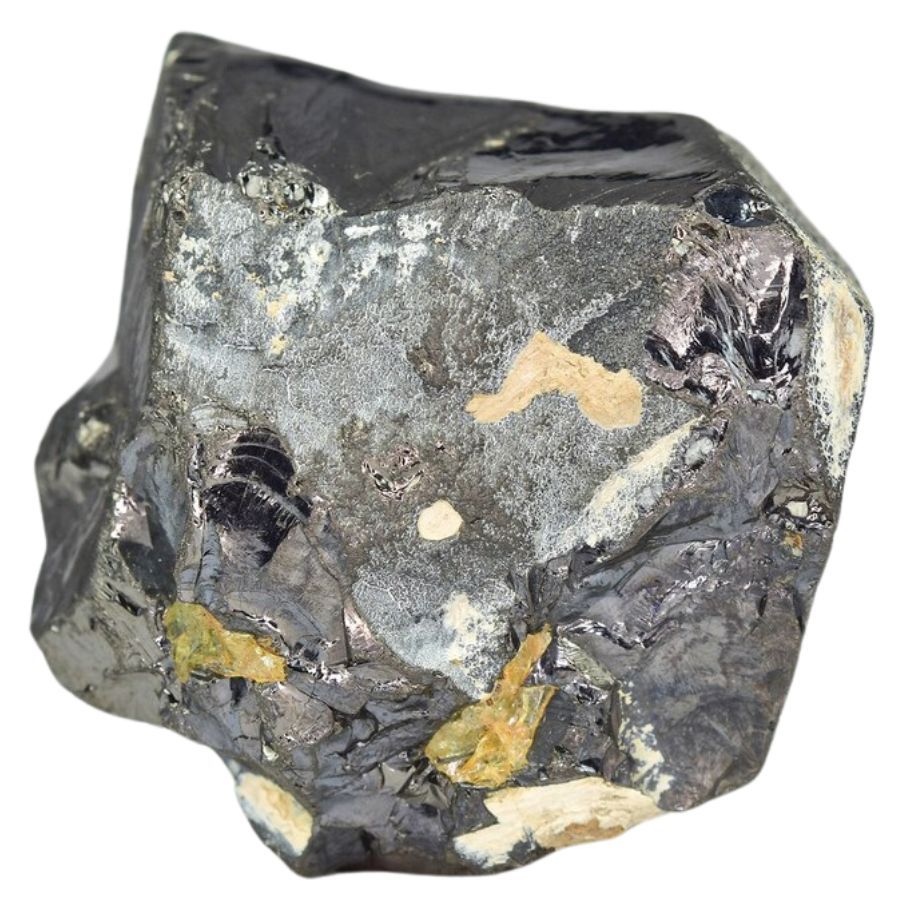
Using a magnet to test rocks and minerals is effective because some minerals contain iron, which is magnetic. If a rock is attracted to the magnet, this indicates the presence of iron or iron-bearing minerals.
For example, magnetite, a common iron ore, is strongly magnetic, so it will stick to a magnet easily.
This magnetic test is particularly useful for differentiating between similar-looking minerals. Hematite, another iron ore, is less magnetic than magnetite, so it will have a weaker attraction to the magnet.
This difference helps in correctly identifying these minerals.
Non-magnetic minerals, like quartz or calcite, won’t react to the magnet at all, which is also a valuable clue.
Luster
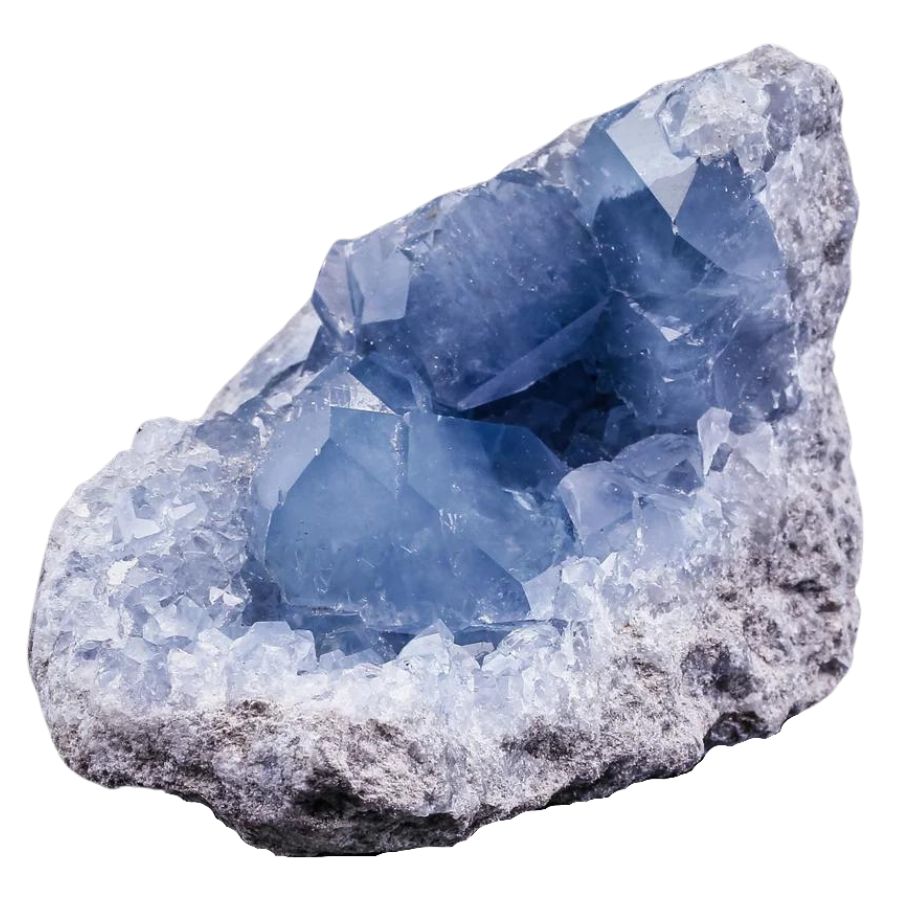
Luster describes the way light interacts with the surface of a mineral. There are several types of luster, and each can tell us something different about a mineral.
Metallic luster looks like metal, shiny and reflective, typical in minerals like pyrite and galena. Glassy, or vitreous luster, is like the surface of a glass window, common in quartz, celestine, and many other minerals.
Observing luster can sometimes be subjective, but with practice, it becomes easier to distinguish. For example, a mineral with a metallic luster will look very different from one with a glassy luster, even if they are similar in color.
The luster of a mineral can also change depending on whether its surface is fresh or weathered. A freshly broken piece might have a different luster compared to a weathered surface.
This is important to consider when identifying minerals in the field.
Cleavage and Fracture
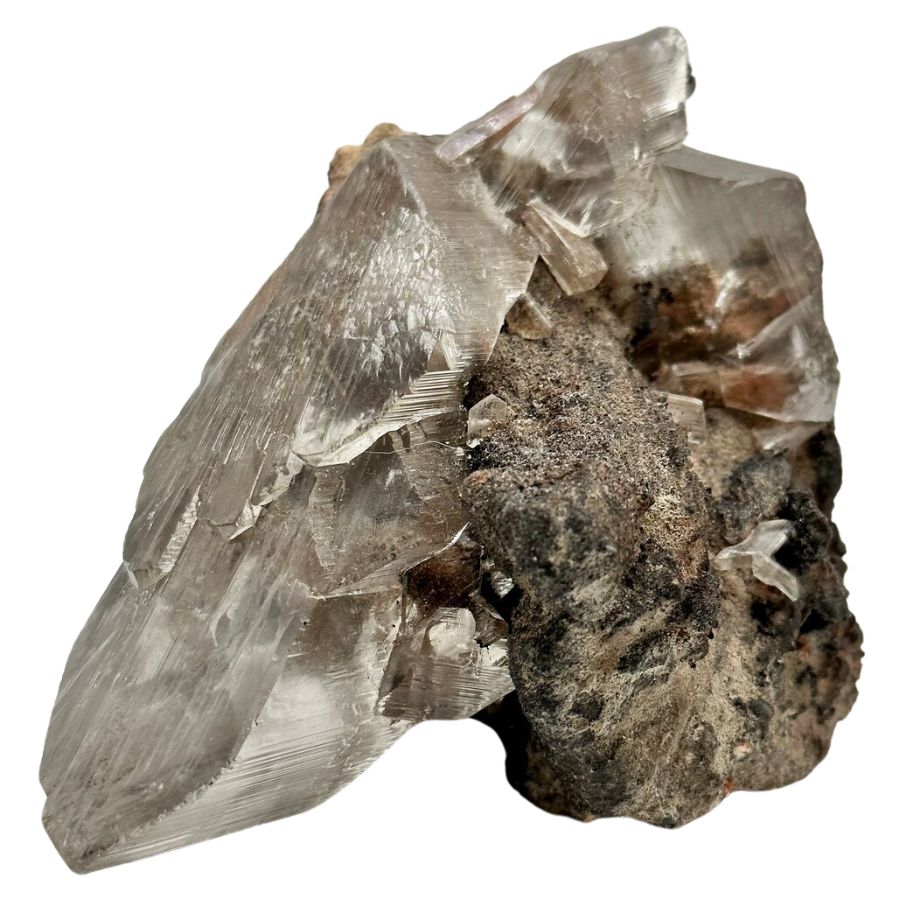
Cleavage and fracture refer to the way a mineral breaks or splits. When a mineral breaks along smooth, flat surfaces, then we can say that it has perfect cleavage.
Some minerals, like selenite, split into thin sheets, which is a great example of perfect cleavage.
Fracture is different – it’s when a mineral breaks in an irregular or uneven way. Quartz is known for its conchoidal fracture, which means that the breakage looks like the inside curve of a seashell.
By observing cleavage and fracture, we can gather important clues about a mineral’s identity.
Looking at how a mineral breaks can sometimes be more informative than color or texture. This is because cleavage and fracture are related to a mineral’s internal structure, which doesn’t change.
Even when a mineral’s color is altered by impurities, its cleavage and fracture remain consistent.
Fluorescence
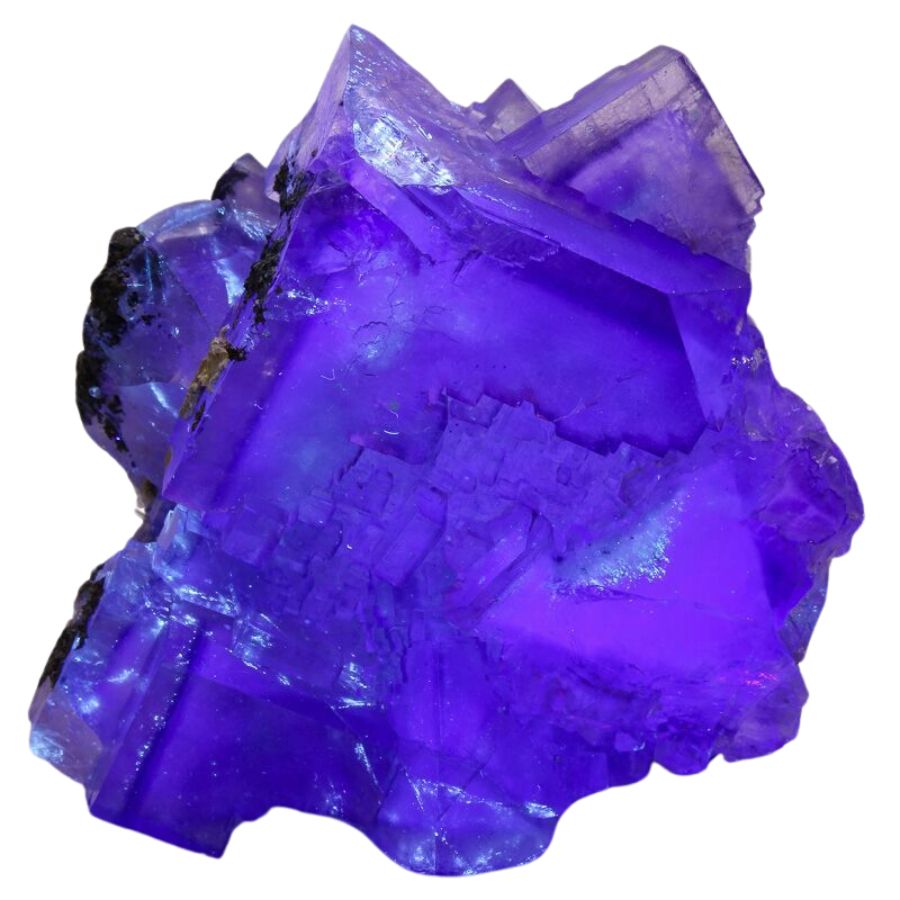
In Oklahoma rock identification, one exciting method is looking at a mineral’s ability to fluoresce. When some minerals are exposed to ultraviolet (UV) light, they emit visible light, a process known as fluorescence.
Fluorescence happens because certain minerals absorb UV light and then release part of that energy as visible light. This cool feature can be a big help in telling different minerals apart.
Not all minerals will fluoresce, but those that do can show a range of colors. For example, calcite might glow pink, blue, or even red under UV light, while fluorite can shine in bright greens or blues.
The color of the fluorescence can give clues about the mineral’s composition.
Additionally, some minerals only fluoresce under certain types of UV light, like shortwave or longwave.
The intensity of the glow can vary too. Some minerals might have a strong, bright fluorescence, while others might glow faintly.
It’s also important to note that the presence or absence of fluorescence doesn’t change the mineral’s other properties. This means that fluorescence is just one part of the puzzle in identifying minerals.

